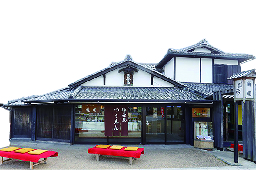A trip through 800 years of tea history in Japan
Itinerary (240mins)
Kyoto City → [30 mins] → Uji City: Komano
Ashikage-en Ruins, Mampuku-ji Temple (50 mins) → Uji
City: Fukujuen Ujicha Kobo (30 mins) → Asahiyaki Shop
& Gallery (20 mins) → Uji City: Uji Bridge / Tsuen Chaya
Tea House (20 mins) → Uji City: Horii Shichimeien “Tea
Experience”(40 mins)*reservation required → [30 mins] → Kyoto City
●Mampuku-ji Temple
Founded in 1661 by Chinese zen master Yin-yuan, this ancient Buddhist temple features a distinctly Chinese style of architecture. Vegetarian Chinese fucha ryori meals can also be sampled at its on-site restaurant.
●Fukujuen Ujicha Kobo
Here you can enjoy Uji’s tea culture, through tea-making, tea tasting, dining, and shopping for souvenirs.
●Asahiyaki Shop & Gallery
Purchase your favorite earthenware at the Asahi pottery, one of the historically important Enshu Nakagama potteries.
●Tsuen Chaya Tea House
The oldest tea house in Japan, located on the east side of the Uji bridge, with origins dating back to 1160. Its current building was constructed in 1672 during the beginning of the Edo Period and contains a wooden carving of its 1st generation owner, by renowned Zen monk Ikkyu Sojun. You can enjoy freshly milled matcha-infused green tea desserts and sweets here.
● Horii Shichimei-en
During the Muromachi era, General Ashikaga designated seven Uji tea plantations as the elite “Shichmei-en”. This is the only one remaining today. Special tea made from the leaves grown here can be enjoyed in the tea room.

